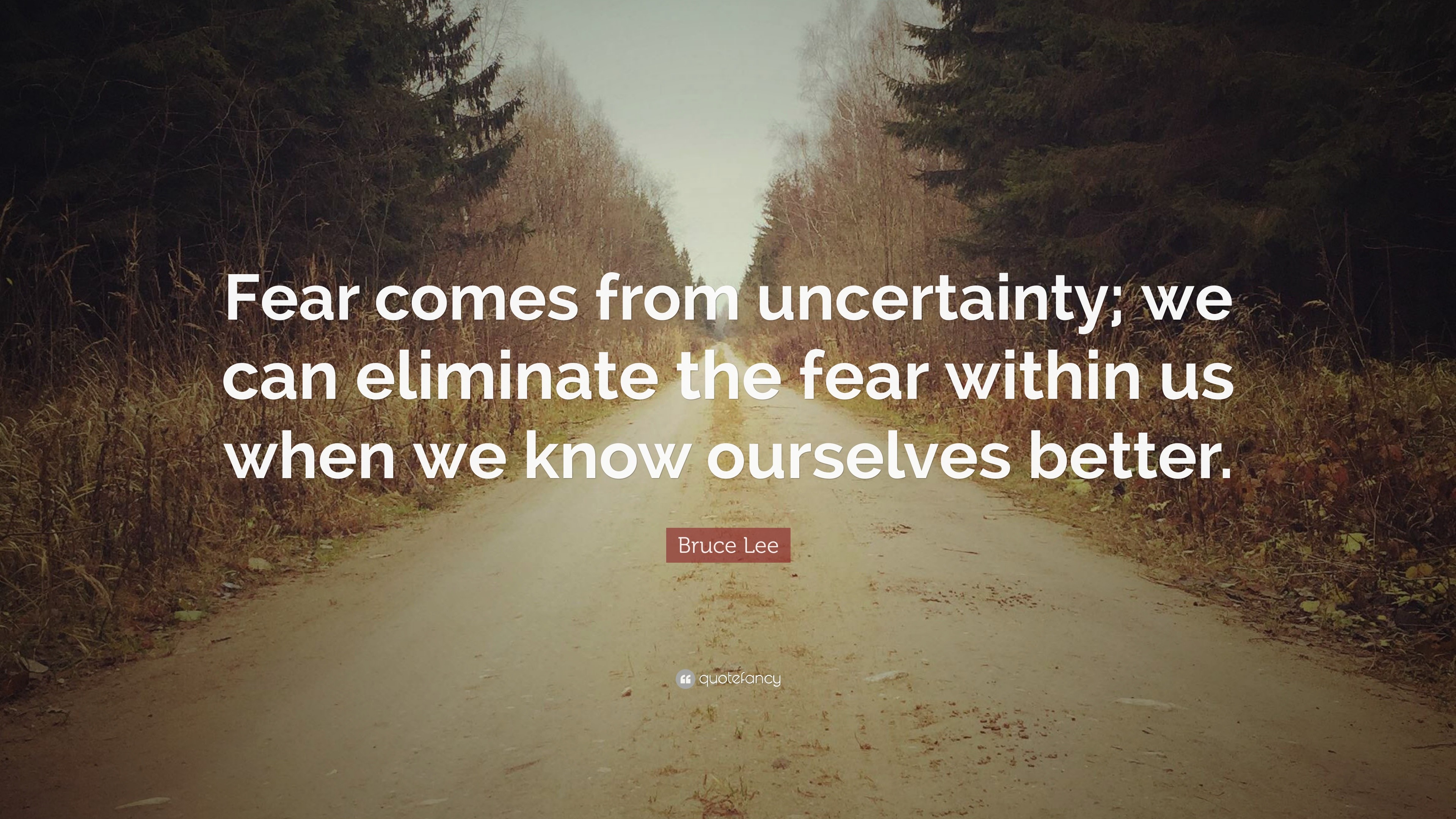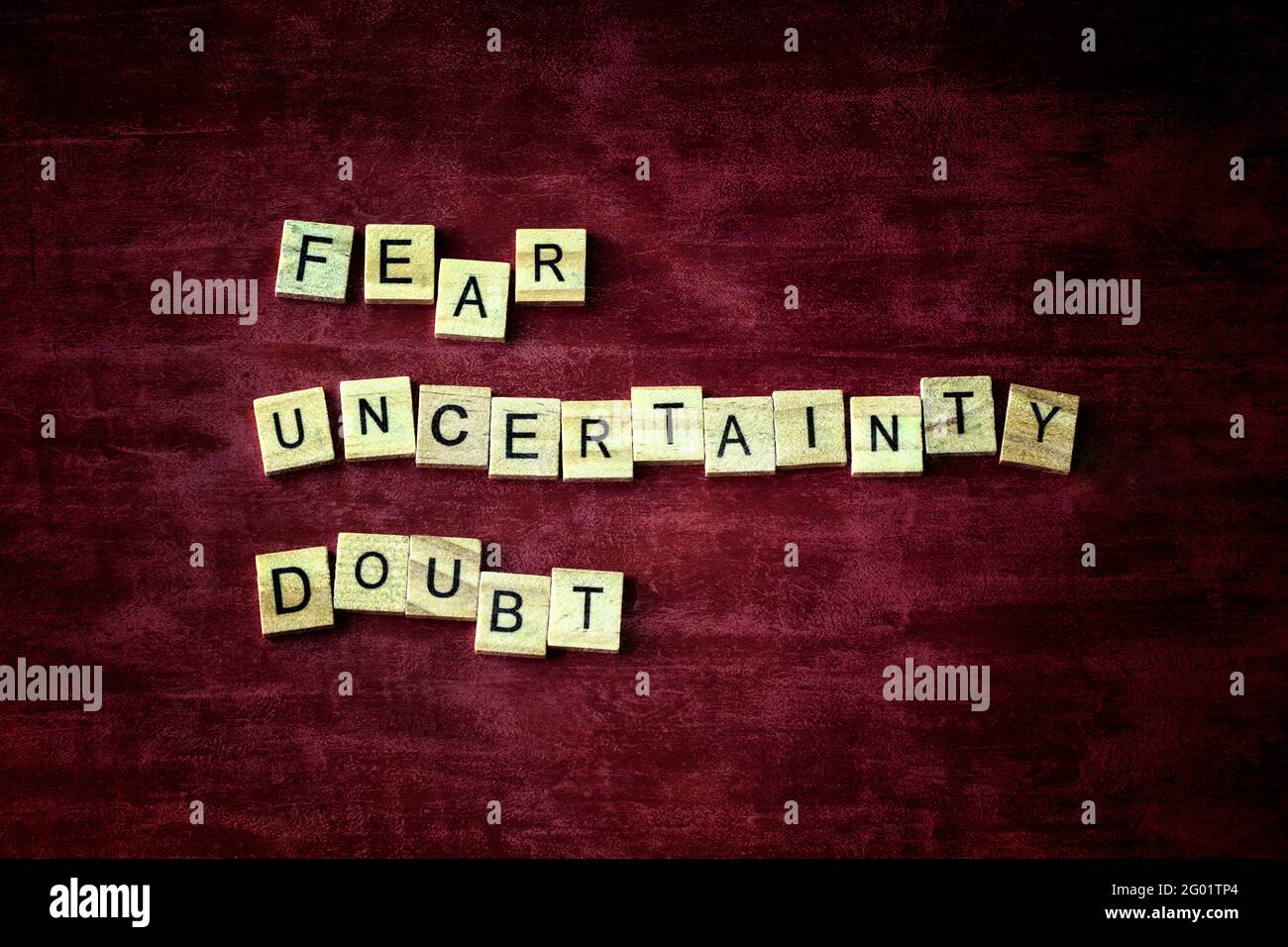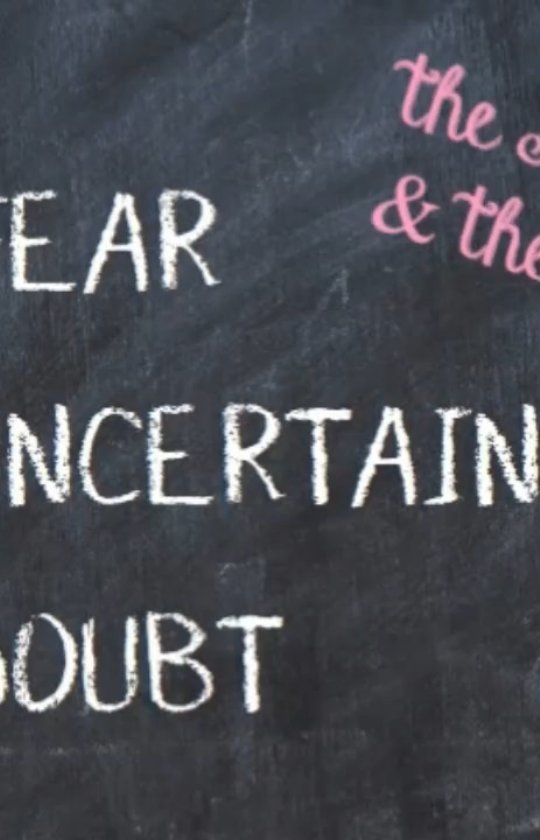
Bruce Lee Quote “Fear comes from uncertainty; we can eliminate the
FUD stands for fear, uncertainty and doubt, and is a method used in sales and marketing to dissuade customers from buying competing products and solutions by providing information that triggers fear and uncertainty, or sows seeds of doubt, about current customer thinking. Things that may be suggested include: That competing products are.

Blocks of 'Fear', 'Uncertainty', and 'Doubt', FUD concept in sales
Fear Uncertainty and Doubt: Fear, uncertainty and doubt (FUD) is a technique used in business that attempts to create a negative impression and opinion of a competing organization or individual. Fear, uncertainty and doubt attempts to persuade current and prospective customers of the superiority of a product by promoting false, ambiguous and.

Fud The 37 Power Tactics of Fear, Uncertainty, and Doubt by William
FUD stands for "fear, uncertainty, and doubt" and refers to a general mindset of pessimism about a particular asset or market, as well as the manipulation of investor or consumer emotions so that they succumb to FUD. While the term "fear, uncertainty, and doubt" has been in circulation for a century or so, it became popular as the.

Oscar Munoz Uncertainty always creates doubt, and doubt...
Takeaway. Keep in mind that fear, uncertainty, and doubt (FUD) can have a significant impact on a writer's emotional, mental, physical, and spiritual health. Fear and uncertainty can cause feelings of anxiety and stress, which can lead to physical symptoms such as headaches, muscle tension, etc. Therefore as a writer, prolonged exposure to FUD.

Fear. Uncertainty. Doubt. • Instilling
Fear, uncertainty and doubt (FUD) is a tactic used in sales, marketing, public relations,[1] [2] politics and propaganda. FUD is generally a strategic attempt to influence public perception by disseminating negative and dubious/false information designed to undermine the credibility of their beliefs. An individual firm, for example, might use FUD to invite unfavorable opinions and speculation.

a common way to spread FUD (Fear, Uncertainty, and Doubt) on social
What is Fear, Uncertainty, and Doubt (FUD) in Crypto? FUD is a common expression in both the traditional and digital asset industry. It happens when people share negative news about a project with intent to spook investors. In crypto, the strategy involves using misinformation, fictitious, or exaggerated information to target an asset, project.

Fear, uncertainty, and doubt Wikipedia Fear, Doubt, Summary judgment
Fear, Uncertainty, and Doubt. FUD stands for "fear, uncertainty, and doubt." It's a communication tactic used to influence people towards having a negative perception of something, generally through deliberate misinformation or inciting fear. Historically, FUD has also been used to mean "fear, uncertainty, and disinformation," which has.

FUD Fear Uncertainty Doubt Symbol. Concept Words FUD Fear Uncertainty
Learn to recognize when fear, uncertainty, and doubt are at play: Fear The Symptoms. Fear leaves us vulnerable to loss aversion — a type of cognitive bias that skews our decisions to defensive.
FUD Fear Uncertainty Doubt Symbol. Concept Words FUD Fear Uncertainty
Spreading fear, uncertainty and doubt is an effective tactic. It spreads suspicion and leads people to retreat back to the assumed safest choice. On October 4, 1957, the world looked to the heavens.

Fear, Doubt, and Uncertainty Perpetual Adoration
Abstract. This is an editorial based on personal experience dealing with the fear, uncertainty, and doubt regarding artificial intelligence (AI) and radiology (my field of specialization). In the end, the most important tools to engage with these are education, research, and policy or regulation with the ultimate goal of forging trust, not just.

Fud Fear Uncertainty Doubt Symbol Concept Words Fud Fear Uncertainty
Fear, uncertainty, and doubt (abbreviated as FUD), are a collection of mental states that can influence people's thinking in a variety of situations, and that are often used together to manipulate people's behavior.. For example, a salesperson might push a customer to buy unnecessary software for their computer, by promoting FUD in various ways, such as exaggerating the risk of online.

How To Fear, Doubt, and Uncertainty in Network Marketing
Fear, uncertainty and doubt. Fear, uncertainty and doubt, frequently abbreviated as FUD, is a tactic used in sales, marketing, public relations, [1] [2] politics and propaganda. FUD is generally a strategic attempt to influence perception by disseminating negative and dubious or false information. An individual firm, for example, might use FUD.

How to Ethically Market with FUD Fear, Uncertainty, & Doubt
Fear, uncertainty and doubt (FUD) is a common tactic used to manipulate investor and consumer emotions. It can come in the form of rumors, adverse facts, false news stories or any other piece of.

Uncertainty Turning Fear and Doubt into Fuel for
Fear, uncertainty and doubt (FUD) is the appeal to fear in sales or marketing; in which a company disseminates negative (and vague) information on a competitor's product. The term originated to describe misinformation tactics in the computer hardware industry and has since been used more broadly. FUD is "implicit coercion" by "any kind of.

Fear Uncertainty Doubt FUD Text on Sticky Notes Isolated on Office Desk
This article examines the nature and legality of FUD, which—as will be seen—is a timely subject. IBM may have been FUD's originator but its greatest practitioner is allegedly none other than Microsoft, which (according to the firm's critics) has repeatedly exercised FUD tactics in order to acquire and maintain its operating system monopoly. In particular, this article compares Amdahl.

Hội chứng FUD (Fear, uncertainty, and doubt) là gì?
Fear, uncertainty and doubt (often shortened to FUD) is a disinformation strategy used in sales, marketing, public relations, politics, cults, and propaganda. FUD is generally a strategy to influence perception by disseminating negative and dubious or false information and a manifestation of the appeal to fear. While the phrase dates to at least the early 20th century, the present common usage.